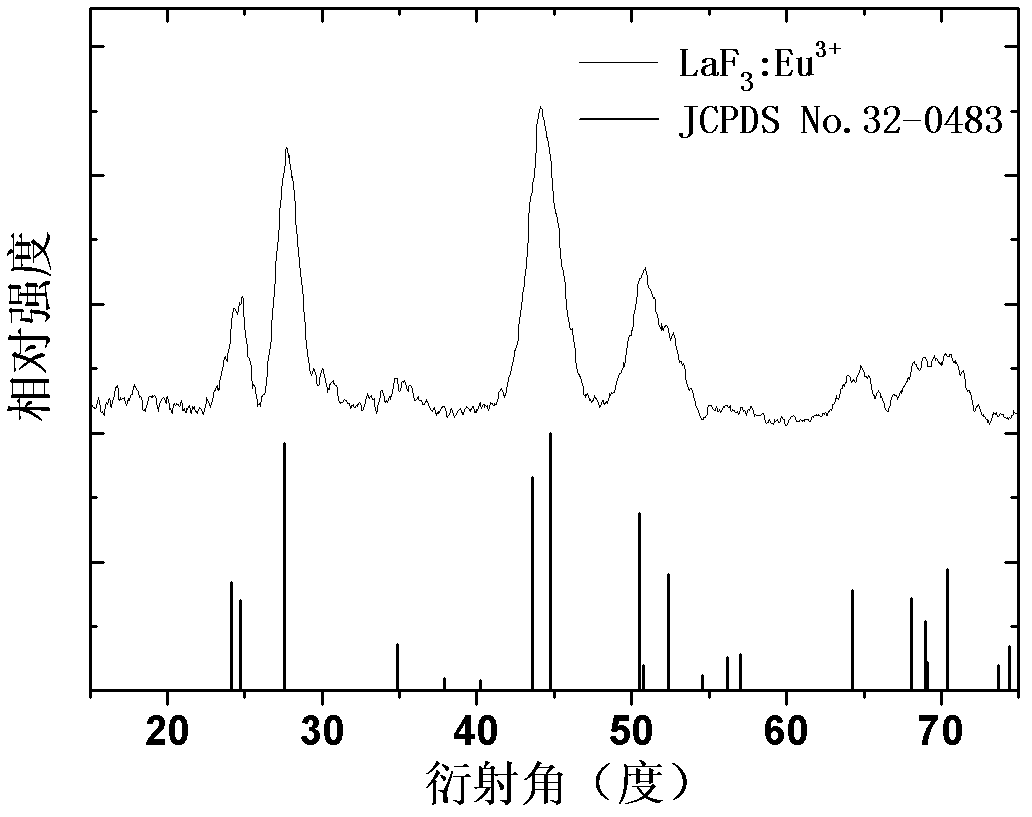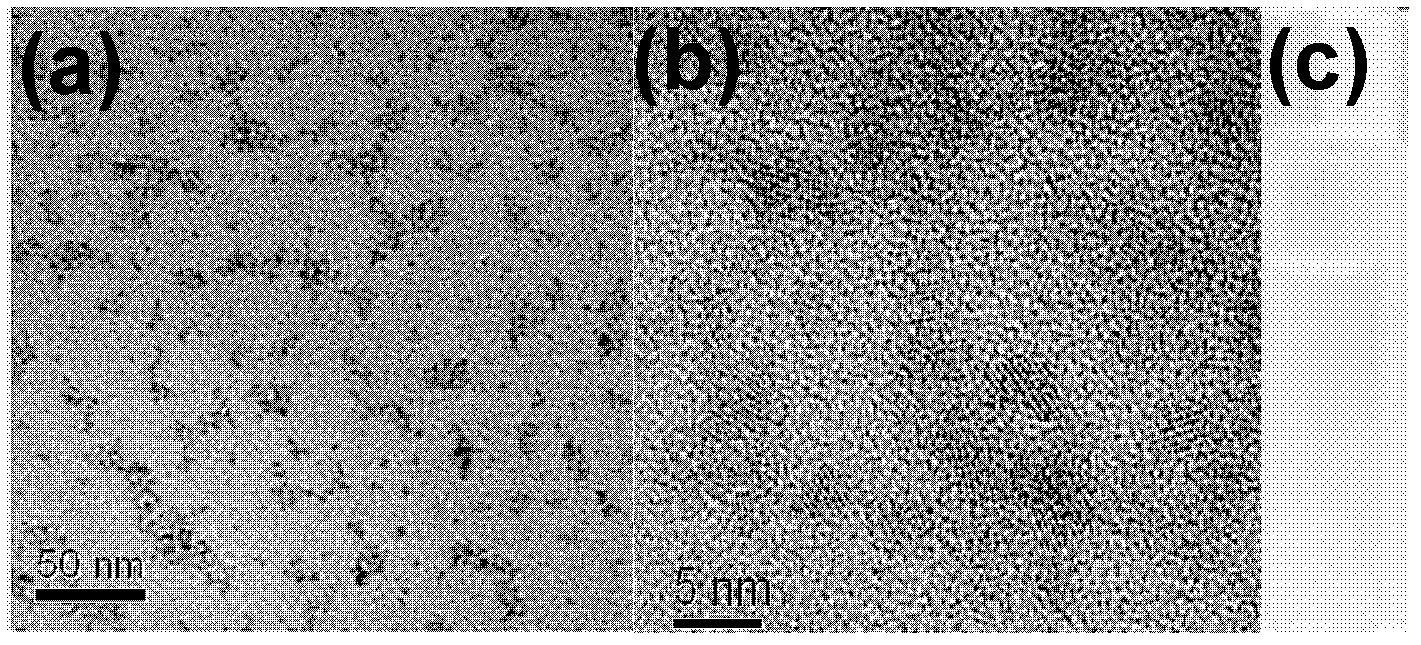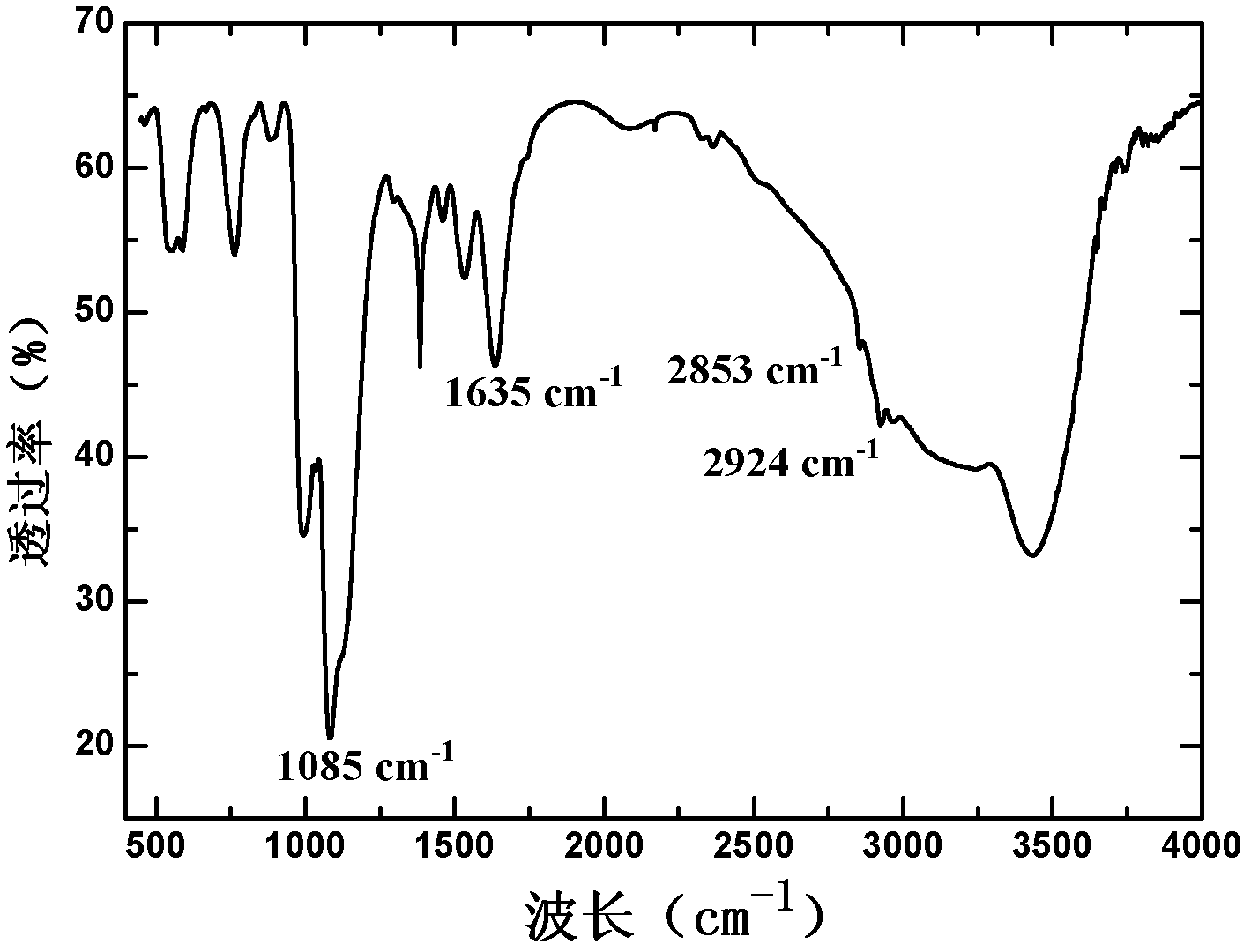Method for synthesizing amino functionalized rare earth-doped lanthanum fluoride nano fluorescent marker material
A rare earth doping and amino synthesis technology, applied in luminescent materials, chemical instruments and methods, analytical materials, etc., can solve problems such as limiting the practical application of nanomaterials, affecting the efficiency of biological detection and analysis, affecting the luminescent properties of nanocrystals, etc. The conditions are easy to control, the particles are uniform, and the size is small.
- Summary
- Abstract
- Description
- Claims
- Application Information
AI Technical Summary
Problems solved by technology
Method used
Image
Examples
example 1
[0024] Example 1: Weigh 0.07 g of AEP, dissolve it in 30 mL of distilled water to obtain a transparent solution, then adjust the pH value to 6 with ammonia water, then add 0.126 g of NaF to it, stir to dissolve it completely, and obtain solution A, keep it warm in 30℃; another 0.424 g La(NO 3 ) 3 ·6H 2 O and 0.009 g Eu(NO 3 ) 3 ·6H 2 O was completely dissolved in 5 mL of distilled water to obtain a transparent solution B; under stirring, solution B was added dropwise to solution A, and stirring was continued for 20 hours to obtain a transparent solution. Then, 50 mL of acetone was added to the solution to precipitate nanocrystals, which were centrifuged, washed with water and ethanol several times, and then dried under vacuum at 60°C to obtain LaF 3 : 2% Eu nanocrystalline powder. The obtained nanocrystalline powder is dissolved in water to obtain a colorless and transparent aqueous solution. It is detected with a spectrometer, and under the excitation of 394 nm, strong...
example 2
[0025] Example 2: Weigh 0.14 g of AEP, dissolve it in 30 mL of distilled water to obtain a transparent solution, then adjust the pH value to 7 with ammonia water, then add 0.168 g of NaF to it, stir to dissolve it completely, and obtain solution C, which is kept at 60℃; another 0.346 g La(NO 3 ) 3 ·6H 2 O, 0.065 g Ce(NO 3 ) 3 ·6H 2 O and 0.023 g Tb(NO 3 ) 3 ·6H 2 O was completely dissolved in 5 mL of distilled water to obtain a transparent solution D; under stirring, solution D was added dropwise to solution C, and stirring was continued for 20 hours to obtain a transparent solution. Then 50 mL of acetone was added to the solution to precipitate nanocrystals, which were centrifuged, washed with water and ethanol several times, and then dried under vacuum at 60°C to obtain LaF 3 : 15%Ce, 5%Tb nanocrystalline powder. The obtained nanocrystalline powder is dissolved in water to obtain a colorless and transparent aqueous solution. Using a spectrometer for detection, unde...
example 3
[0026] Example 3: Weigh 0.28 g of AEP, dissolve it in 30 mL of distilled water to obtain a transparent solution, then adjust the pH value to 8 with ammonia water, then add 0.21 g of NaF to it, stir to dissolve it completely, and obtain solution E, keep it warm in 90℃; another 0.216 g La(NO 3 ) 3 ·6H 2 O and 0.228 g Dy(NO 3 ) 3 ·6H 2 O was completely dissolved in 5 mL of distilled water to obtain a transparent solution F; under stirring, solution F was added dropwise to solution E, and stirring was continued for 20 hours to obtain a transparent solution. Then 50 mL of acetone was added to the solution to precipitate nanocrystals, which were centrifuged, washed with water and ethanol several times, and then dried under vacuum at 60°C to obtain LaF 3 : 50% Dy nanocrystalline powder.
PUM
 Login to View More
Login to View More Abstract
Description
Claims
Application Information
 Login to View More
Login to View More - R&D
- Intellectual Property
- Life Sciences
- Materials
- Tech Scout
- Unparalleled Data Quality
- Higher Quality Content
- 60% Fewer Hallucinations
Browse by: Latest US Patents, China's latest patents, Technical Efficacy Thesaurus, Application Domain, Technology Topic, Popular Technical Reports.
© 2025 PatSnap. All rights reserved.Legal|Privacy policy|Modern Slavery Act Transparency Statement|Sitemap|About US| Contact US: help@patsnap.com



